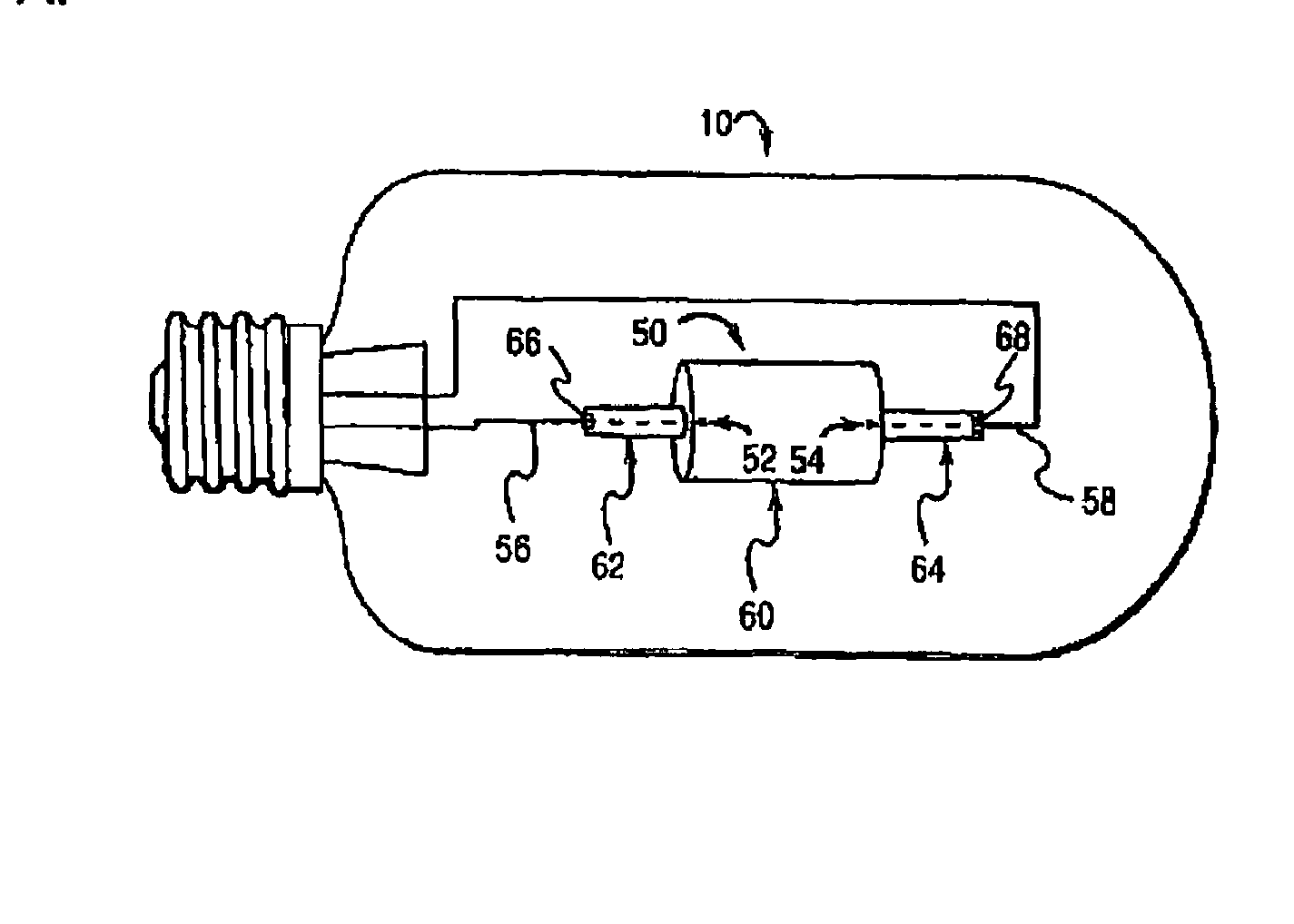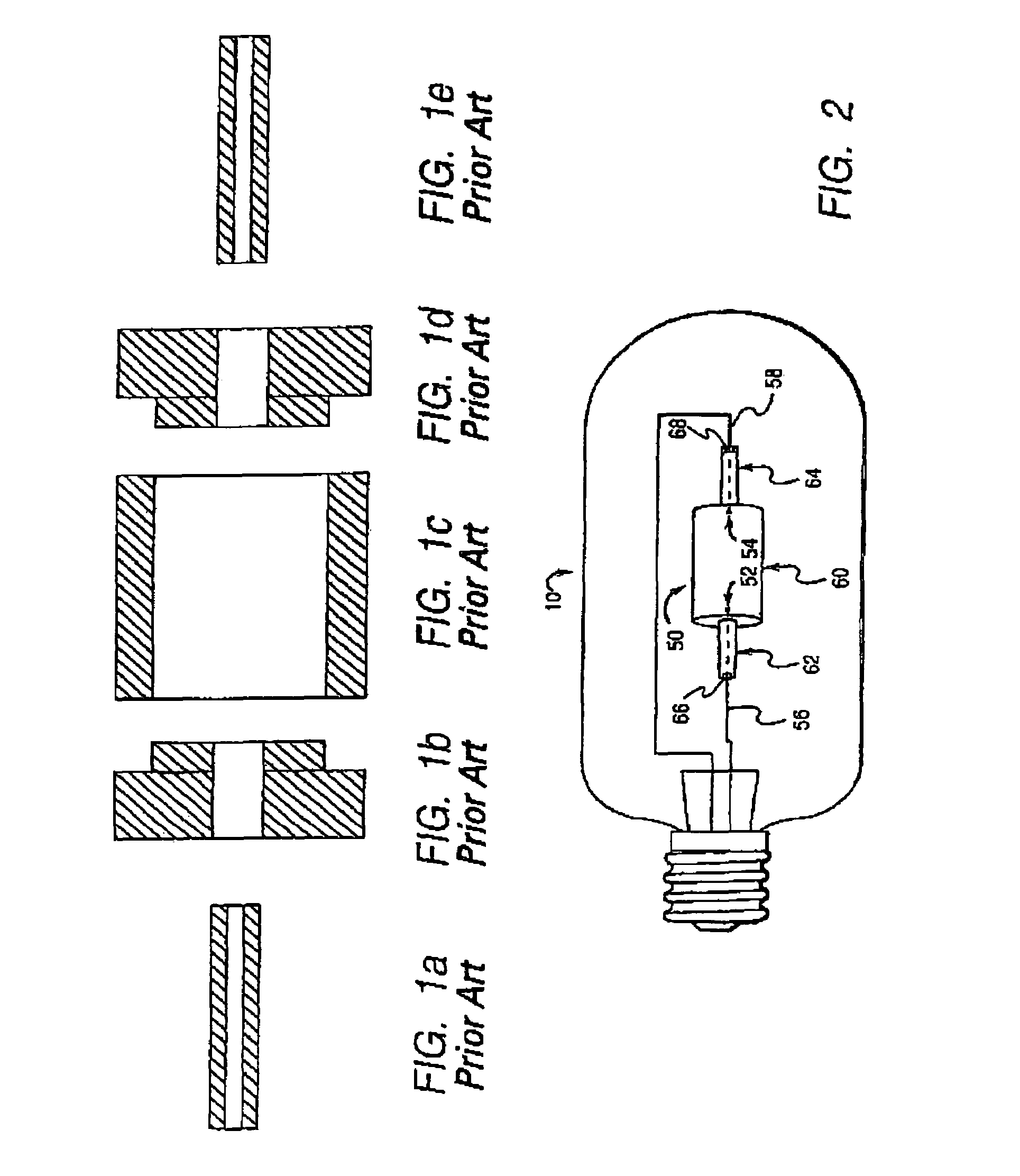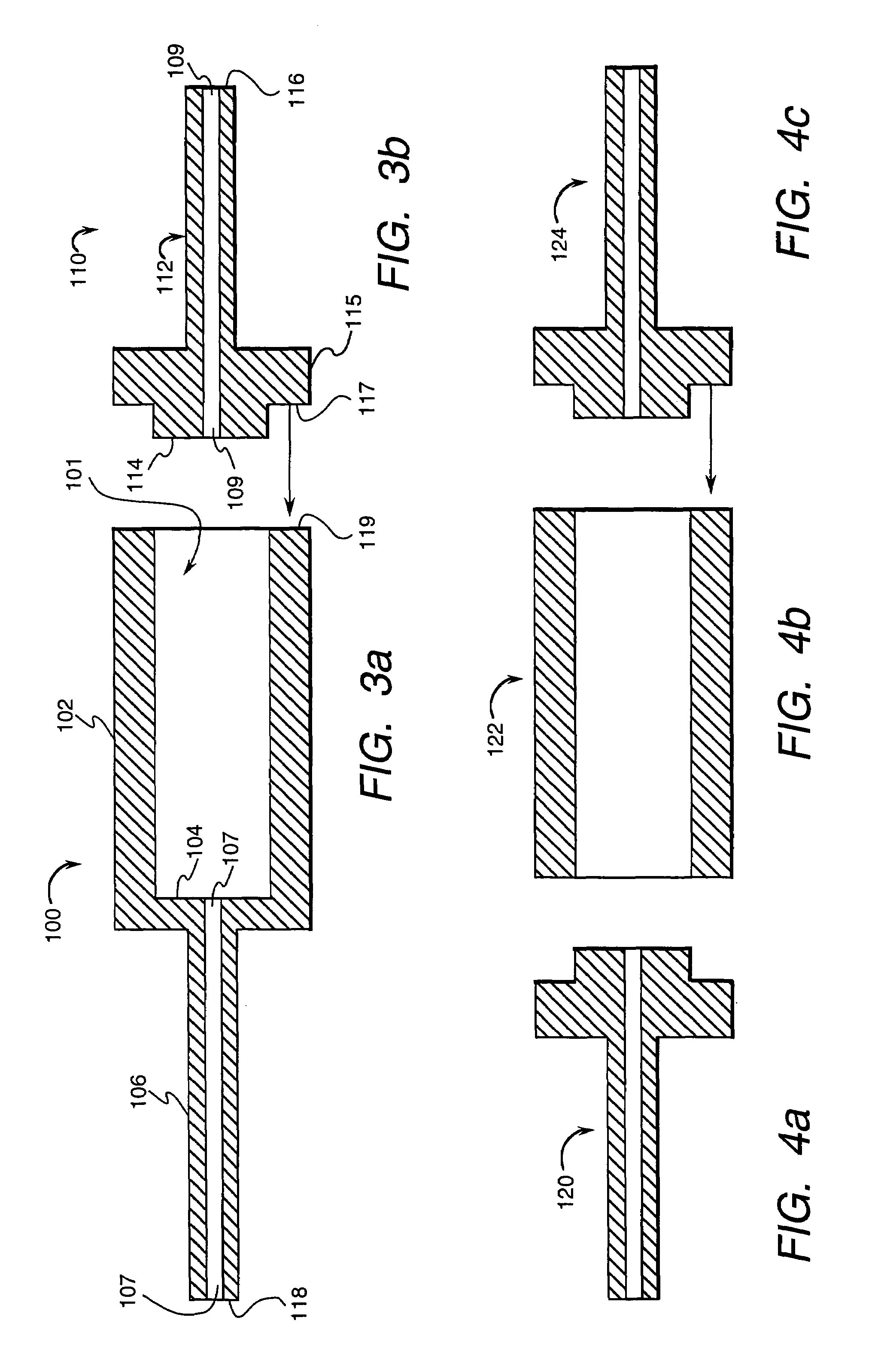Ceramic discharge chamber for a discharge lamp
a discharge lamp and ceramic technology, applied in the field of lighting, can solve the problems of depletion of filler constituents, certain reactive properties of fused quartz, and high operating temperature, and achieve the effects of reducing the number of potential bond defects, facilitating the assembly of the chamber, and reducing the number of bonds
- Summary
- Abstract
- Description
- Claims
- Application Information
AI Technical Summary
Benefits of technology
Problems solved by technology
Method used
Image
Examples
Embodiment Construction
[0020]FIG. 2 illustrates a discharge lamp 10 according to an exemplary embodiment of the invention The discharge lamp 10 includes a discharge chamber 50 which contains two electrodes 52, 54 and a filler material. The electrodes 52, 54 are connected to conductors 56, 58 which apply a potential difference across the electrodes. In operation, the electrodes 52, 54 produce an arc which ionizes the filler material to produce a plasma in the discharge chamber 50. The emission characteristics of the light produced by the plasma depend primarily on the constituents of the filler material, the voltage across the electrodes, the temperature distribution of the chamber, the pressure in the chamber, and the geometry of the chamber. For a ceramic metal halide lamp, the filler material typically comprises a mixture of Hg, a rare gas such as Ar or Xe, and a metal halide such as NaI, lII, or DyI3. For a high pressure sodium lamp, the filler material typically comprises Na, a rare gas, and Hg. Other...
PUM
| Property | Measurement | Unit |
|---|---|---|
| angle | aaaaa | aaaaa |
| temperatures | aaaaa | aaaaa |
| temperature | aaaaa | aaaaa |
Abstract
Description
Claims
Application Information
 Login to View More
Login to View More - R&D
- Intellectual Property
- Life Sciences
- Materials
- Tech Scout
- Unparalleled Data Quality
- Higher Quality Content
- 60% Fewer Hallucinations
Browse by: Latest US Patents, China's latest patents, Technical Efficacy Thesaurus, Application Domain, Technology Topic, Popular Technical Reports.
© 2025 PatSnap. All rights reserved.Legal|Privacy policy|Modern Slavery Act Transparency Statement|Sitemap|About US| Contact US: help@patsnap.com



